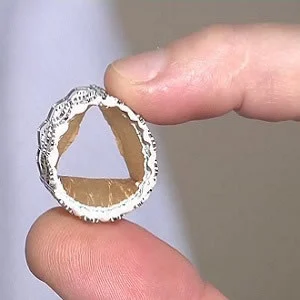A new study looking at the longer-term outcomes after transcatheter aortic valve replacement (TAVR) shows that survival rate is higher in women than men one year after the procedure. Even though women have more complications as a result of the TAVR procedure – especially bleeding and vascular issues – they still fared better than men one year after the procedure, according to the findings reported in the Journal of the American College of Cardiology.
See Also: Risk Factors, Outcomes of Infective Endocarditis after TAVR
"These findings are significant because it may mean heart teams are overestimating the risks of TAVR in some women and that also may mean that valve replacement is underutilised," says lead author Roxana Mehran, MD, professor of medicine in cardiology at The Zena and Michael A. Wiener Cardiovascular Institute, Icahn School of Medicine at Mount Sinai. "In other words, some women who could benefit from TAVR may not be getting it."
TAVR is a minimally invasive treatment method used for people with severe symptomatic aortic valve disease who are at high risk, and about half of patients who undergo this procedure are women. To decide who should have TAVR versus another type of procedure, such as surgical aortic valve replacement (SAVR) or medical therapy, surgeons and heart teams assess a person's risk by using scoring methods that determine their 30-day mortality and morbidity risks. However, these scoring methods were generally designed to predict risk as it relates to SAVR, not TAVR.
Dr. Mehran and colleagues reviewed data from the STS/ACC TVT Registry covering more than 23,000 patients that received TAVR with older generation devices between 2011 and 2014. The study involved an almost equal proportion of men (51.1 percent) and women (49.9 percent).
Data showed that men were more likely to be treated with percutaneous TAVR which is when a tube is inserted through the skin into the artery in the groin. Women were more likely to have a surgical incision for TAVR. Additionally, although very rare, there was a greater chance that the operating cardiologist or surgeon would need to abort TAVR and switch over to open surgery – due to complications – in women.
Despite the fact that women had more procedural problems, the study noted that they had better survival at one year. In addition, with smaller and improved TAVR devices, women can increasingly undergo procedures percutaneously via the smaller artery in the groin, which would be expected to decrease the risk of procedural complications as well.
The findings also highlight the need for a robust scoring assessment that is specific to TAVR and catered to women to help the care team make the best decisions, Dr. Mehran points out.
In an accompanying editorial, Molly Szerlip, MD, a cardiologist at The Heart Hospital Baylor Plano in Plano, Texas, writes, "One should, however, interpret the results of this study with caution. The findings of this study are only applicable to the population that was studied and should not necessarily be extrapolated to lower risk populations or to patients who receive newer generation valves."
Source: American College of Cardiology
Image Credit: Vimeo.com
References:
Chandrasekhar J, Dangas G, Yu J et al. (2016) Sex-based differences in outcomes with transcatheter aortic valve therapy: TVT registry from 2011 to 2014. J Am Coll Cardiol, 68(25): 2733-44. DOI: 10.1016/j.jacc.2016.10.041
Latest Articles
Valve Replacement, transcatheter aortic valve replacement , TAVR, survival rate
A new study looking at the longer-term outcomes after transcatheter aortic valve replacement (TAVR) shows that survival rate is higher in women than men one year after the procedure










